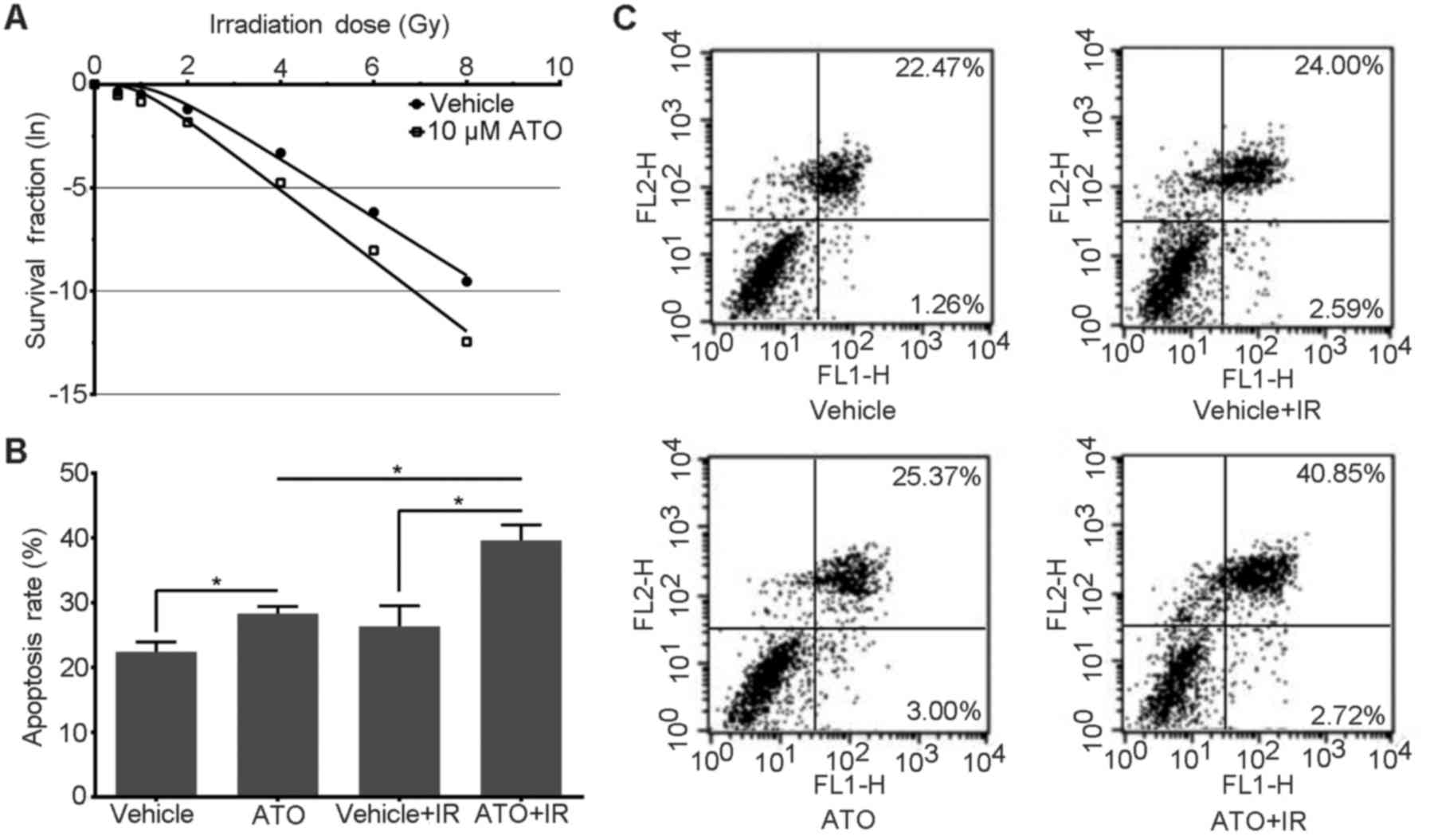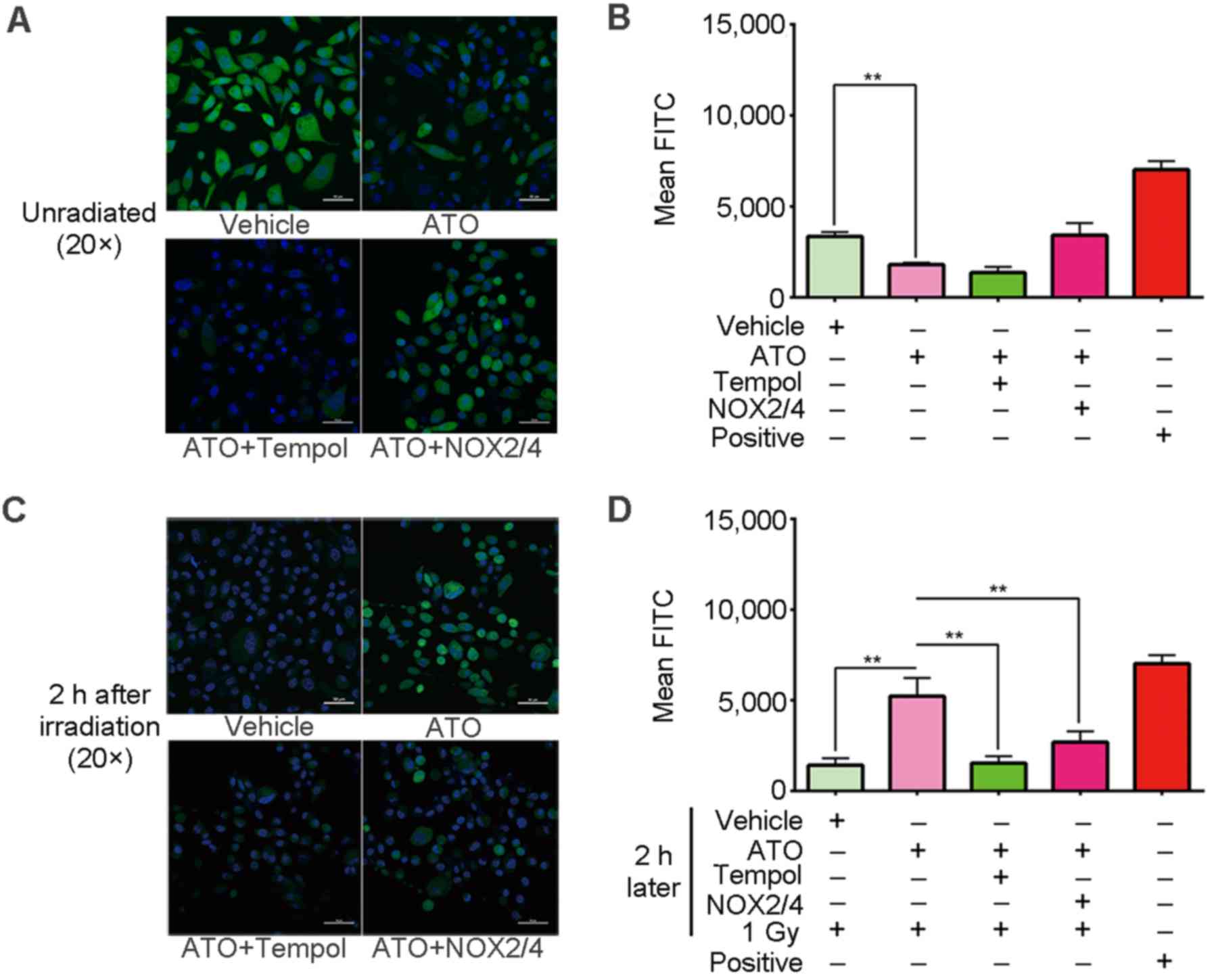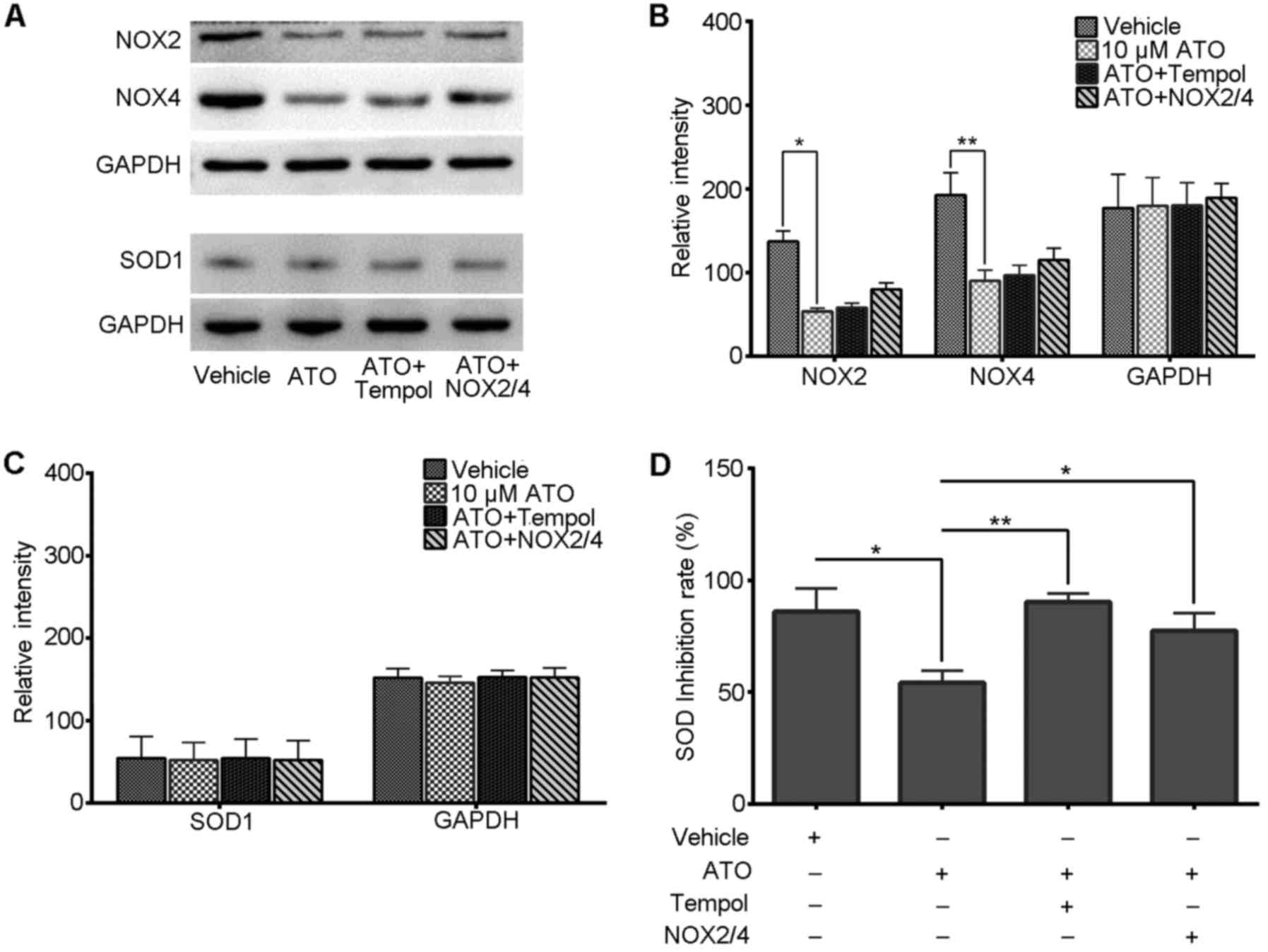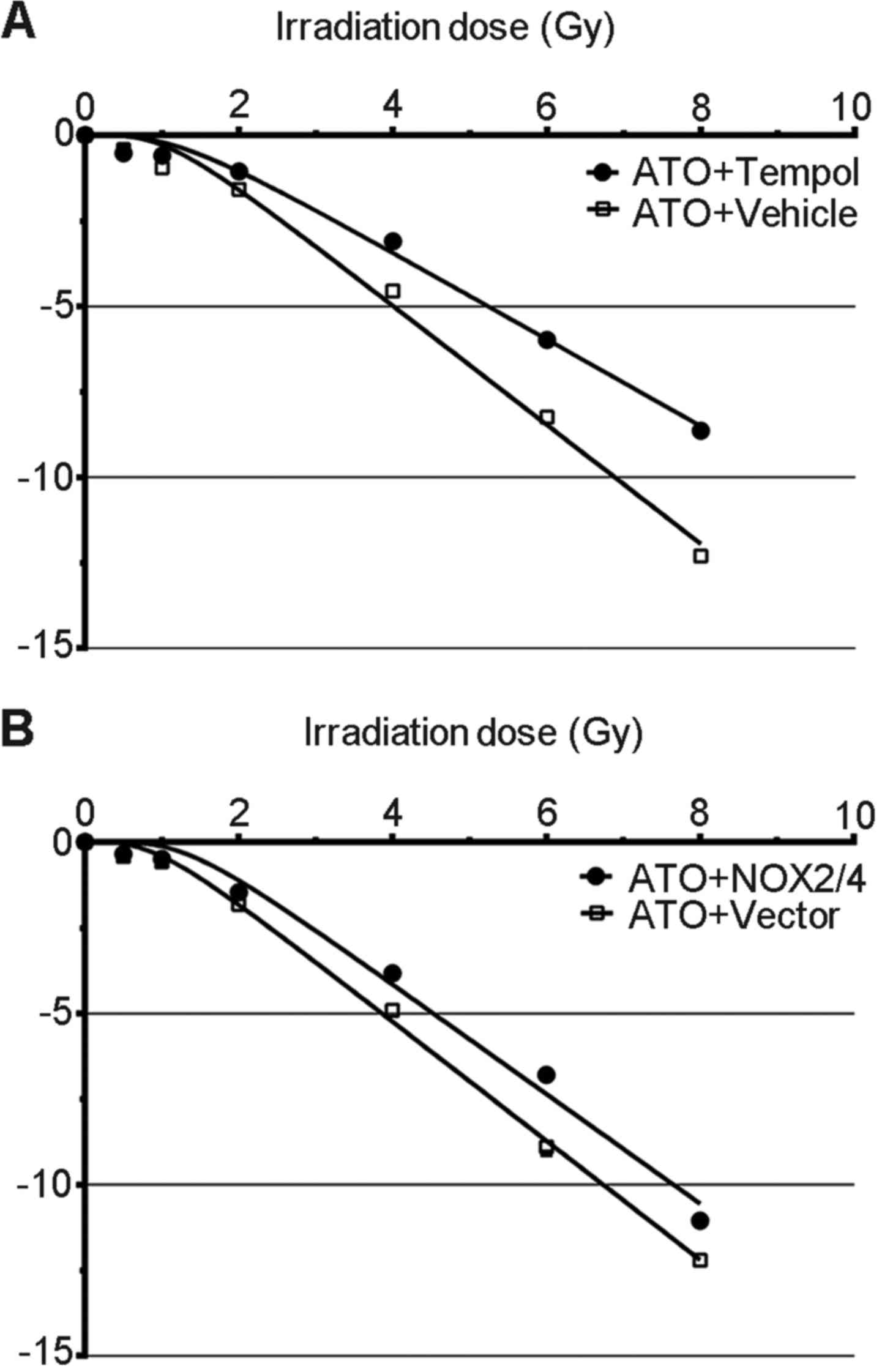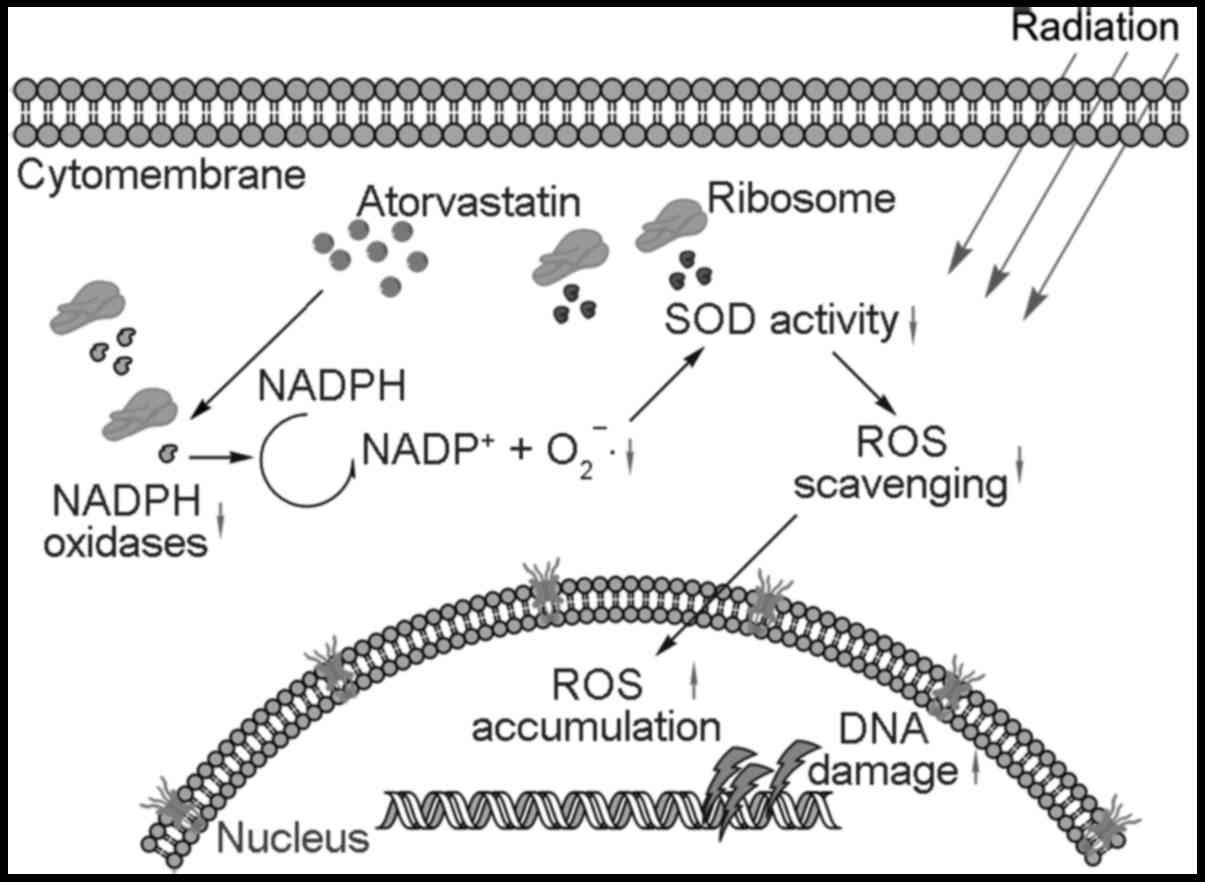|
1
|
Delaney G, Jacob S, Featherstone C and
Barton M: The role of radiotherapy in cancer treatment: Estimating
optimal utilization from a review of evidence-based clinical
guidelines. Cancer. 104:1129–1137. 2005. View Article : Google Scholar : PubMed/NCBI
|
|
2
|
Seong KM, Kim CS, Jeon HY, Oh SH, Nam SY,
Yang KH, Kim JY and Jin YW: Intrinsic radiosensitivity correlated
with radiation-induced ROS and cell cycle regulation. Mol Cell
Toxicol. 6:1–7. 2010. View Article : Google Scholar
|
|
3
|
Cooke MS, Evans MD, Dizdaroglu M and Lunec
J: Oxidative DNA damage: Mechanisms, mutation, and disease. FASEB
J. 17:1195–1214. 2003. View Article : Google Scholar : PubMed/NCBI
|
|
4
|
Goldstein JL and Brown MS: Regulation of
the mevalonate pathway. Nature. 343:425–430. 1990. View Article : Google Scholar : PubMed/NCBI
|
|
5
|
Park HS, Schoenfeld JD, Mailhot RB, Shive
M, Hartman RI, Ogembo R and Mucci LA: Statins and prostate cancer
recurrence following radical prostatectomy or radiotherapy: A
systematic review and meta-analysis. Ann Oncol. 24:1427–1434. 2013.
View Article : Google Scholar : PubMed/NCBI
|
|
6
|
He Z, Mangala LS, Theriot CA, Rohde LH, Wu
H and Zhang Y: Cell killing and radiosensitizing effects of
atorvastatin in PC3 prostate cancer cells. J Radiat Res (Tokyo).
53:225–233. 2012. View Article : Google Scholar
|
|
7
|
Fritz G, Brachetti C and Kaina B:
Lovastatin causes sensitization of HeLa cells to ionizing
radiation-induced apoptosis by the abrogation of G2 blockage. Int J
Radiat Biol. 79:601–610. 2003. View Article : Google Scholar : PubMed/NCBI
|
|
8
|
Mihăilă RG: Advances in the management of
malignant hemopathies: The role of statins. Recent Pat DNA Gene
Seq. 7:57–61. 2013. View Article : Google Scholar : PubMed/NCBI
|
|
9
|
Song X, Liu BC, Lu XY, Yang LL, Zhai YJ,
Eaton AF, Thai TL, Eaton DC, Ma HP and Shen BZ: Lovastatin inhibits
human B lymphoma cell proliferation by reducing intracellular ROS
and TRPC6 expression. Biochim Biophys Acta. 1843:894–901. 2014.
View Article : Google Scholar : PubMed/NCBI
|
|
10
|
Wassmann S, Laufs U, Müller K, Konkol C,
Ahlbory K, Bäumer AT, Linz W, Böhm M and Nickenig G: Cellular
antioxidant effects of atorvastatin in vitro and in vivo.
Arterioscler Thromb Vasc Biol. 22:300–305. 2002. View Article : Google Scholar : PubMed/NCBI
|
|
11
|
Leith JT, Quaranto L, Padfield G,
Michelson S and Hercbergs A: Radiobiological studies of PC-3 and
DU-145 human prostate cancer cells: X-ray sensitivity in
vitro and hypoxic fractions of xenografted tumors in vivo. Int
J Radiat Oncol Biol Phys. 25:283–287. 1993. View Article : Google Scholar : PubMed/NCBI
|
|
12
|
Tucker SL: Parameters of radiosensitivity.
Radiat Res. 108:226–229. 1986. View
Article : Google Scholar : PubMed/NCBI
|
|
13
|
Oliver R and Shepstone B: Some practical
considerations in determining the parameters for multi-target and
multi-hit survival curves. Phys Med Biol. 9:167–175. 1964.
View Article : Google Scholar
|
|
14
|
Jones KJ, Chetram MA, Bethea DA, Bryant
LK, Odero-Marah V and Hinton CV: Cysteine (C)-X-C receptor 4
regulates NADPH oxidase-2 during oxidative stress in prostate
cancer cells. Cancer Microenviron. 6:277–288. 2013. View Article : Google Scholar :
|
|
15
|
Verheij M and Bartelink H:
Radiation-induced apoptosis. Cell Tissue Res. 301:133–142. 2000.
View Article : Google Scholar : PubMed/NCBI
|
|
16
|
Kim GJ, Fiskum GM and Morgan WF: A role
for mitochondrial dysfunction in perpetuating radiation-induced
genomic instability. Cancer Res. 66:10377–10383. 2006. View Article : Google Scholar : PubMed/NCBI
|
|
17
|
Lesser MP: Oxidative stress in marine
environments: Biochemistry and physiological ecology. Annu Rev
Physiol. 68:253–278. 2006. View Article : Google Scholar : PubMed/NCBI
|
|
18
|
Kumar B, Koul S, Khandrika L, Meacham RB
and Koul HK: Oxidative stress is inherent in prostate cancer cells
and is required for aggressive phenotype. Cancer Res. 68:1777–1785.
2008. View Article : Google Scholar : PubMed/NCBI
|
|
19
|
Lu JP, Hou ZF, Duivenvoorden WC, Whelan K,
Honig A and Pinthus JH: Adiponectin inhibits oxidative stress in
human prostate carcinoma cells. Prostate Cancer Prostatic Dis.
15:28–35. 2012. View Article : Google Scholar : PubMed/NCBI
|
|
20
|
Lu JP, Monardo L, Bryskin I, Hou ZF,
Trachtenberg J, Wilson BC and Pinthus JH: Androgens induce
oxidative stress and radiation resistance in prostate cancer cells
though NADPH oxidase. Prostate Cancer Prostatic Dis. 13:39–46.
2010. View Article : Google Scholar : PubMed/NCBI
|
|
21
|
Deacon J, Peckham MJ and Steel GG: The
radioresponsiveness of human tumours and the initial slope of the
cell survival curve. Radiother Oncol. 2:317–323. 1984. View Article : Google Scholar : PubMed/NCBI
|
|
22
|
Kryston TB, Georgiev AB, Pissis P and
Georgakilas AG: Role of oxidative stress and DNA damage in human
carcinogenesis. Mutat Res. 711:193–201. 2011. View Article : Google Scholar : PubMed/NCBI
|
|
23
|
Boonstra J and Post JA: Molecular events
associated with reactive oxygen species and cell cycle progression
in mammalian cells. Gene. 337:1–13. 2004. View Article : Google Scholar : PubMed/NCBI
|
|
24
|
Zhang Y and Martin SG: Redox proteins and
radiotherapy. Clin Oncol (R Coll Radiol). 26:289–300. 2014.
View Article : Google Scholar : PubMed/NCBI
|
|
25
|
Trachootham D, Alexandre J and Huang P:
Targeting cancer cells by ROS-mediated mechanisms: A radical
therapeutic approach? Nat Rev Drug Discov. 8:579–591. 2009.
View Article : Google Scholar : PubMed/NCBI
|
|
26
|
Lambeth JD: NOX enzymes and the biology of
reactive oxygen. Nat Rev Immunol. 4:181–189. 2004. View Article : Google Scholar : PubMed/NCBI
|
|
27
|
Goettsch C, Goettsch W, Muller G, Seebach
J, Schnittler HJ and Morawietz H: Nox4 overexpression activates
reactive oxygen species and p38 MAPK in human endothelial cells.
Biochem Biophys Res Commun. 380:355–360. 2009. View Article : Google Scholar : PubMed/NCBI
|
|
28
|
Pignatelli P, Carnevale R, Pastori D,
Cangemi R, Napoleone L, Bartimoccia S, Nocella C, Basili S and
Violi F: Immediate antioxidant and antiplatelet effect of
atorvastatin via inhibition of Nox2. Circulation. 126:92–103. 2012.
View Article : Google Scholar : PubMed/NCBI
|
|
29
|
Nathan C and Cunningham-Bussel A: Beyond
oxidative stress: An immunologists guide to reactive oxygen
species. Nat Rev Immunol. 13:349–361. 2013. View Article : Google Scholar : PubMed/NCBI
|
|
30
|
Youn HD, Kim EJ, Roe JH, Hah YC and Kang
SO: A novel nickel-containing superoxide dismutase from
Streptomyces spp. Biochem J. 318:889–896. 1996. View Article : Google Scholar : PubMed/NCBI
|
|
31
|
Juarez JC, Manuia M, Burnett ME,
Betancourt O, Boivin B, Shaw DE, Tonks NK, Mazar AP and Doñate F:
Superoxide dismutase 1 (SOD1) is essential for
H2O2-mediated oxidation and inactivation of
phosphatases in growth factor signaling. Proc Natl Acad Sci USA.
105:7147–7152. 2008. View Article : Google Scholar : PubMed/NCBI
|
|
32
|
Riley PA: Free radicals in biology:
Oxidative stress and the effects of ionizing radiation. Int J
Radiat Biol. 65:27–33. 1994. View Article : Google Scholar : PubMed/NCBI
|















